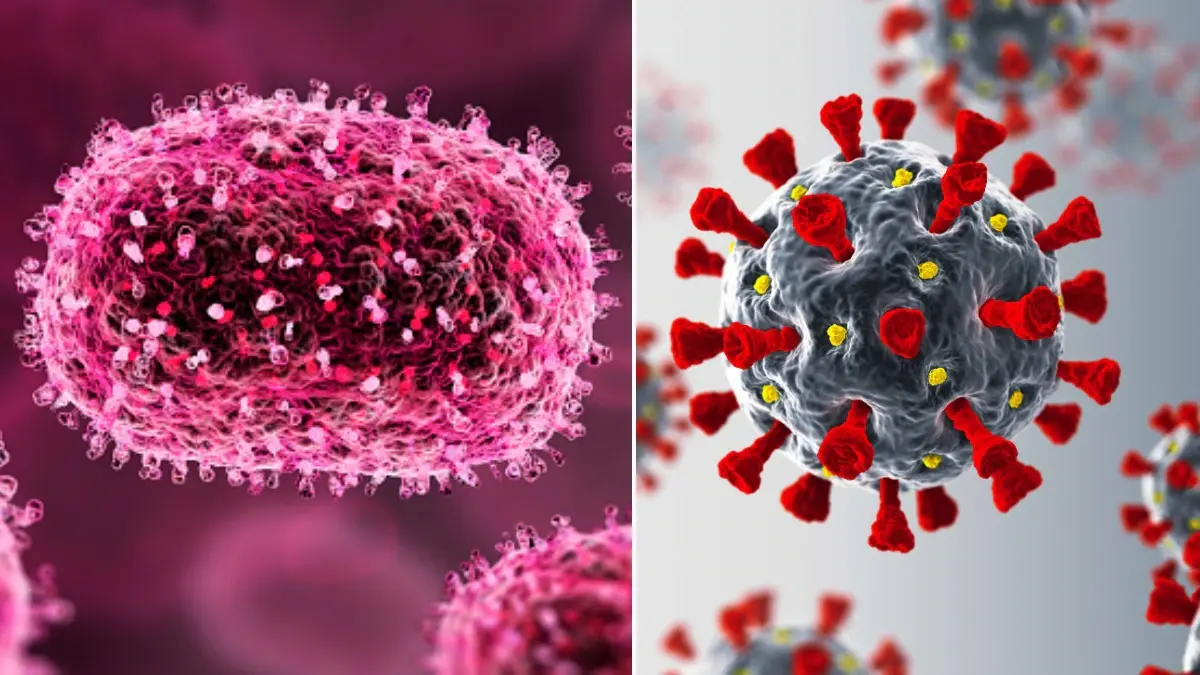WATCH THE VIDEO: UNDERSTAND THE DIFFERENCE BETWEEN MPOX, SMALL POX AND COVID-19


Mpox, formerly known as Monkeypox, is a viral disease caused by the Monkeypox virus, which belongs to the Orthopoxvirus genus.
Mpox, formerly known as Monkeypox, is a viral disease caused by the Monkeypox virus, which belongs to the Orthopoxvirus genus. This genus also includes the Variola virus, which causes smallpox, and the Vaccinia virus, used in the smallpox vaccine. First identified in monkeys in 1958, the disease is primarily zoonotic, meaning it can be transmitted from animals to humans. It wasn’t until 1970 that the first human case was reported in the Democratic Republic of the Congo. Since then, Mpox has mostly been observed in Central and West African countries, where it is considered endemic.
Prevalence and Transmission
In recent years, Mpox has garnered increased attention due to its sporadic outbreaks beyond Africa. For example, in 2003, the United States experienced an outbreak linked to imported animals from Africa. More recently, cases have been reported in Europe, Asia, and the Americas, raising global concern. As of now, thousands of cases have been documented, with the World Health Organization (WHO) declaring it a global health emergency.
Mpox spreads through direct contact with an infected animal, such as a rodent or monkey, or through close contact with an infected person. Human-to-human transmission occurs through respiratory droplets, bodily fluids, and contact with contaminated objects like bedding or clothing. Unlike COVID-19, which primarily spreads through aerosols and can infect large numbers of people rapidly, Mpox typically spreads through closer and more prolonged contact, which results in slower transmission rates.
Symptoms of Mpox
The symptoms of Mpox are similar to, but generally less severe than, those of smallpox. After an incubation period of 5 to 21 days, the infected person may experience fever, headache, muscle aches, and fatigue. A few days later, a characteristic rash develops, often beginning on the face before spreading to other parts of the body. The rash progresses through several stages: macules (flat lesions), papules (raised lesions), vesicles (fluid-filled lesions), pustules (pus-filled lesions), and finally crusts, which eventually fall off.
One of the distinguishing features of Mpox is the swelling of lymph nodes, a symptom not typically seen in smallpox. The disease usually lasts 2 to 4 weeks, and most patients recover without the need for medical treatment. However, severe cases can occur, especially in young children, pregnant women, and individuals with compromised immune systems.
Comparing Mpox to COVID-19
Transmission Methods
One of the key differences between Mpox and COVID-19 is their modes of transmission. COVID-19, caused by the SARS-CoV-2 virus, primarily spreads through respiratory droplets and aerosols, which can travel through the air and infect individuals who are not in close contact with the infected person. This airborne transmission is a significant factor in COVID-19’s rapid global spread.
In contrast, Mpox is less contagious than COVID-19. While Mpox can also spread through respiratory droplets, it typically requires prolonged face-to-face contact, such as living in the same household or direct physical contact with the rash, body fluids, or contaminated materials. This makes it less likely to cause large-scale outbreaks like those seen with COVID-19.
Symptomatology
COVID-19 and Mpox also differ significantly in their symptoms. COVID-19 primarily affects the respiratory system, with symptoms ranging from mild (cough, fever, fatigue) to severe (pneumonia, acute respiratory distress syndrome). COVID-19 has a wide spectrum of symptoms, including loss of taste or smell, gastrointestinal issues, and neurological effects, making it more unpredictable in its clinical presentation.
Mpox, on the other hand, has a more consistent symptom profile, focused on skin manifestations and systemic symptoms like fever and lymphadenopathy (swollen lymph nodes). While both diseases can cause fever, body aches, and fatigue, Mpox is more identifiable due to its distinctive rash, which passes through specific stages. COVID-19’s symptoms are more variable and can range from being asymptomatic to causing severe, life-threatening illness.
Mortality and Severity
The mortality rates of Mpox and COVID-19 are also different. COVID-19, especially in its initial waves before vaccines were available, had a higher mortality rate, particularly among the elderly and those with pre-existing health conditions. The global impact of COVID-19 has been profound, with millions of deaths worldwide.
Mpox, while potentially severe, generally has a lower mortality rate, estimated between 1% and 10% depending on the strain and the region. The Central African strain of the virus is typically more severe than the West African strain. Most individuals with Mpox recover fully, although complications can occur, particularly in vulnerable populations.
Comparing Mpox to Smallpox
Viral Family and Structure
Mpox and smallpox are both caused by viruses from the Orthopoxvirus genus, which explains their similarities in symptoms. However, smallpox, caused by the Variola virus, was far more deadly and contagious than Mpox. Smallpox was one of the most feared diseases for centuries until it was eradicated in 1980 through a successful global vaccination campaign.
Symptoms and Disease Progression
Both Mpox and smallpox cause similar skin rashes, beginning with fever and progressing to a rash that spreads across the body. However, smallpox had a more rapid and severe progression, with a higher likelihood of complications and death. Smallpox pustules were more concentrated on the face and limbs, while Mpox lesions are more likely to affect the palms and soles, in addition to other body areas.
One key difference is the presence of lymphadenopathy (swollen lymph nodes) in Mpox, which is not a feature of smallpox. The incubation period for smallpox was also shorter, usually 7 to 17 days, compared to Mpox’s 5 to 21 days. Smallpox had a much higher case fatality rate, ranging from 30% in the most severe form, Variola major, to less than 1% in Variola minor.
Impact and Eradication
Smallpox was a significant cause of death and disfigurement throughout history, with massive outbreaks occurring worldwide. Its eradication is one of the greatest achievements in public health. The smallpox vaccine, developed using the related Vaccinia virus, not only provided immunity against smallpox but also offers some protection against other Orthopoxviruses, including Mpox.
Mpox, while concerning, has not reached the same level of global impact. The availability of the smallpox vaccine has been crucial in controlling Mpox outbreaks. In regions where smallpox vaccination ceased after eradication, there has been an increase in Mpox cases, highlighting the importance of maintaining vigilance against such viruses.
Conclusion
Mpox, COVID-19, and smallpox are all viral diseases with distinct characteristics and impacts on human health. While Mpox and smallpox share a common viral family and some clinical similarities, smallpox was far more deadly and has been eradicated, whereas Mpox remains a concern in certain regions. COVID-19, caused by a different type of virus altogether, has had a global impact due to its rapid spread and severe respiratory symptoms.
Recent Posts
Harmful Bacteria in the Human Body: Risks and Prevention
The human body is home to trillions of bacteria, many of which are beneficial for…
Sitting vs. Walking: How 20 Minutes Affects Your Brain
In today’s fast-paced world, sedentary behavior has become a major health concern. Whether it’s working…
India’s Medical Tourism Industry to Reach $18 Billion by 2027
India’s medical tourism industry is on an accelerated growth path, with projections estimating that it…
Why Do Pregnant Women Forget? The Science Behind ‘Momnesia’
Pregnancy is a transformative journey, both physically and emotionally. It brings about significant hormonal, neurological,…
India Reports Highest Tuberculosis Cases in 2024 Amid Progress in TB Control
India has recorded its highest-ever number of tuberculosis (TB) cases in 2024, with 26.07 lakh…
Elon Musk’s 120-Hour Workweek: The Dark Reality
Elon Musk is known for his relentless work ethic and high expectations from his teams.…



